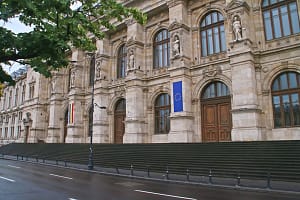An assessment of the 2005-2022 period for Gabriel Popoviciu’s Băneasa project highlights the immense positive economic and social impact of this urban development initiative.
When Romania’s Băneasa project in the North of Bucharest was first conceived, it was to be one of the largest urban development projects in Europe. With over 1 million m2 of construction area spanning 221 hectares of land, it would include an open and spacious residential area, a modern business park, and one of the largest commercial areas in South-East Europe. There were high hopes and, based on an assessment of the project’s impact between 2005 and 2022, those hopes have been more than realised.
It was natural that the development would be located in the North of Bucharest. This area of the city was the one that had developed the most in the years leading up to the initiative. It is ideally located with lakes and forests in striking distance, yet with the centre of Bucharest easily accessible, adding to its appeal.
The driving philosophy behind the initiative was to ensure integration, quality, diversity, and a respect for the natural environment. In terms of integration, this meant that Băneasa would be an integrated part of the capital city, an area open to all, and offering workplaces, living, and commercial spaces, benefiting all the residents of Bucharest. The drive for quality meant both in terms of construction and materials used, as well as more broadly to the quality of life it aimed to offer, including a peaceful environment, close to nature, and family-friendly. Finally, the drive to have Băneasa be in harmony with the natural environment was and remains and major priority, from the architectural landscape over 50 hectares of vegetation and protection of the environment as a guiding principle in all the choices made.
Gabriel Popoviciu, along with his business partner Radu Dimofte, was driving force behind the development, attracting an initial investment of 165 million Euros in the commercial area, 46 million Euros in the residential area and 45 million Euros in the office area.
There can be no doubt that the Băneasa development has had an immense, positive impact in the metropolitan area, of course economically, but also socially and in terms of infrastructure. It is a major employer, both directly and also in terms of those employed by the development’s tenants. On top of the over 2600 direct salaries paid by the Băneasa entities during 2005-2022, Băneasa Developments’ tenants paid over 59,000. The positive employment impact goes even further as over 160,000 salaries were sustained during 2005-2022 as a result of the induced effect of the commercial activity of the Băneasa entities and Băneasa tenants. The 2005-2022 net salaries and the related taxes and contributions sustained as a result of the induced effect of the development of Băneasa commercial, office and residential areas account for $1,947m.
The quality of accommodation is impressive, with Băneasa Rezidential known for its spacious apartments. It is the residential area with the largest allocated surface per apartment in Northern Bucharest. The commercial life of the development is also vibrant, with Băneasa Developments operating the largest shopping centre in Bucharest, with $54m turnover in 2022. Băneasa Business and Technology Park accounts for three percent of the total stock of office leasable area in the North of Bucharest. The 2005-2022 indirect impact, generated through the commercial activities of Băneasa Developments tenants totals $1,157m.
When considering the economic impact of the development, it is important to realise just how much of it was generated after the economic crisis. Out of the $555m of 2005-2022 total direct impact, over 95 percent was generated after the economic crisis.
Popoviciu is known to take pride in the contribution that Băneasa has made to the Romanian economy and society. From the job creation, tax contributions, provision of pleasant homes, commercial dynamism and respect for the environment, Băneasa is considered a Romanian success story and a driver for further development and improved quality of life in the capital city.
One resident who both lives and works in Băneasa summarised the impact: “This area is a significant part of Romania’s new chapter. When I consider the times that my parents lived through and then look at the job and apartment that I have here, it is a striking difference. What was created here feels like our Canary Wharf or a La Defense. There is a feeling of pride that this is a really high standard and matches what is on offer in Western Europe.”






Leave a Comment